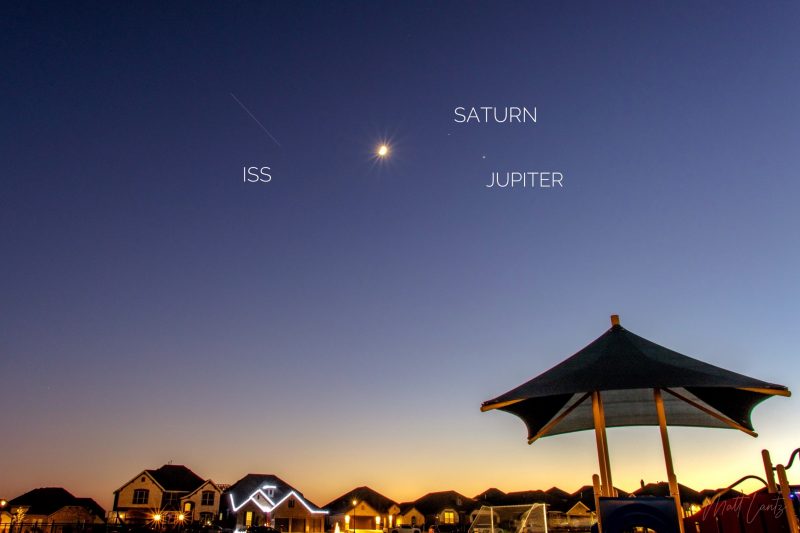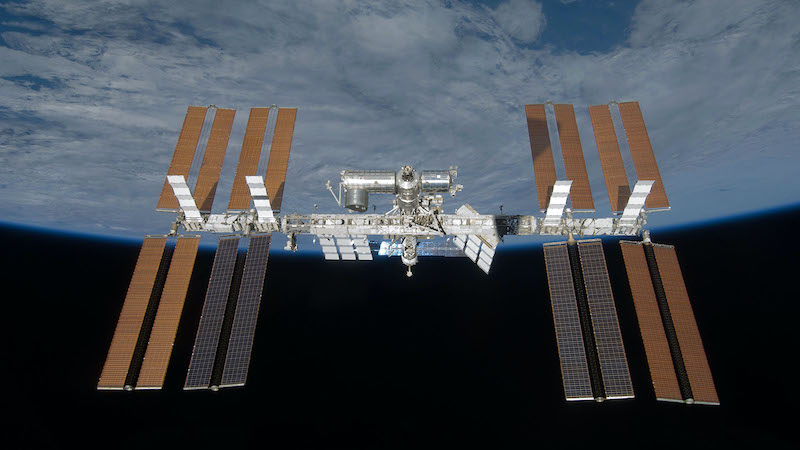When Is the Iss Viewable Again

A bird? A plane? The International Space Station!
The International Space Station (ISS) has been orbiting our planet since 1998. From most locations on Earth, assuming you accept clear night skies, you can see ISS for yourself. Information technology looks like a vivid star moving quickly from horizon to horizon to the states on Earth. As suddenly as information technology appears, it disappears.
But how do you know when to see ISS pass overhead from your location?
NASA has a slap-up tool to assist. The Spot the Station program lets you lot sign upwards to receive alerts that permit you know when ISS will be visible from your location anywhere in the globe, in both the Northern and Southern Hemispheres. Plus, there's a map-based feature to track when to look for the station as information technology flies over you in your night heaven. You lot can also sign up for alerts via email or text bulletin. Typically, alerts are sent out a few times each calendar month when the station's orbit is near your location.
Visit the Spot the Station website to sign up, and meet a list of upcoming sighting opportunities.
The 2022 lunar calendars are here. Order yours before they're gone!
How to spot the International Space Station
If you sign up for NASA's Spot the Station service, you'll become notices only when ISS will be clearly visible from your location for at least a couple of minutes. The notices comprise information on which direction to look for ISS in your dark sky. Not sure nearly your directions? But note where the sun sets. You lot know it sets generally westward. From there, yous tin hands find the direction where the station will appear (for example, in the southwest or northwest).
Via NASA's service, the height at which the station will appear in your sky is given in degrees. Call back, ninety degrees is directly over your head. Any number less than xc degrees will hateful that the station will announced somewhere between the horizon and the overhead marker.
Want a way to mensurate degrees on the sky's dome? Make a fist, and stretch out your arm. Your fist at arm'due south length is equal to most 10 degrees. Then, merely employ the advisable number of fist-lengths to detect the location mark, e.g., four fist-lengths from the horizon would be equal to about 40 degrees.
The station is brilliant! Information technology's hard to miss if you lot're looking in the correct direction.

Two decades of human occupation
The first module of ISS was launched into infinite in 1998, and the initial construction of the station took about two years to consummate. Human occupation of the station began on November 2, 2000. Since that time, ISS has been continuously occupied.
ISS serves every bit both an orbiting laboratory and a port for international spacecraft. Information technology orbits at approximately 220 miles (350 km) above the Earth, and it travels at an average speed of 17,227 miles (27,724 km) per hr. It makes multiple orbits around Earth every 24-hour interval.
The master partnering countries involved in operating ISS include the United States, Canada, Nippon, several European countries and Russian federation. China is currently building its own space station, called Tiangong, and launched the first module in 2021.
One note. Those who live north of 51.6 degrees due north latitude (for example, in Alaska) will probable have to visit the Spot the Station website direct. That'southward because notifications in this region would exist rare.
Enjoying EarthSky? Sign up for our gratuitous daily newsletter today!

Lesser line: Learn to watch the International Space Station moving above your location.
Read more: International Infinite Station to crash into Pacific equally early on equally 2031
pearsoncauseveras1954.blogspot.com
Source: https://earthsky.org/human-world/how-to-spot-the-international-space-station/
0 Response to "When Is the Iss Viewable Again"
Post a Comment